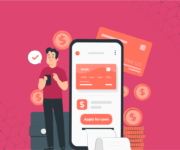Like most emerging economies, India’s financial ecosystem is evolving rapidly and adapting to changing consumer requirements, regulations, and technologies. The B2B BNPL (Buy Now Pay Later) trend has quickly caught up with Indian consumers, primarily driven by the need for convenience and seamless access to credit.
A barrage of BNPL startups has entered the Indian market to address the needs of the underserved and underbanked population.
However, despite the arrival of Fintech companies and increasing tech and internet penetration, around 190 million Indians are still unbanked.
The increasing demand for credit and the rising number of underbanked populations provide fertile ground for BNPL companies’ growth. While BNPL solutions provide significant advantages to small and medium businesses (SMBs) and other borrowers, B2B BNPL also benefits lenders.
This article explores how B2B BNPL can benefit lenders and what its future is in India.
How Can B2B BNPL Benefit Lenders?
The BNPL frenzy is expected to continue in the upcoming years due to several favourable factors we have discussed earlier. Additionally, India’s booming e-commerce sector will further fuel the demand for BNPL solutions, opening up new avenues for Fintech companies and new-age lenders.
Let’s look at some of the most notable benefits of B2B BNPL for lenders:
Establish Market Position
Traditional lending institutions often have processes that can be slow and cumbersome, posing challenges for businesses needing timely access to capital. Additionally, businesses that lack a traditional banking relationship or are located in underserved areas may find it difficult to secure the financing they need.
This highlights the growing need for alternative lending solutions that can better address the evolving needs of businesses.
This is where modern Fintech companies are stepping in and addressing the gap. Today, a shopkeeper in a remote village in Assam can access credit instantly thanks to the B2B BNPL solutions offered by Fintech startups. This innovation allows lenders to expand their market share and gradually establish a solid footing in the financial ecosystem.
Additional Revenue
Lenders have typically relied on consumer credit or a rotating credit line to extend financing options to individuals and businesses, enabling them to make purchases or access funds as needed while repaying the borrowed amount over time. While this system worked well for several decades, the arrival of technology has revolutionised how lending works.
B2C and B2B Buy Now, Pay Later products open up an additional revenue stream for lenders due to the growing demand from retailers and e-commerce players. As more and more retailers and businesses focus on providing flexible payment options to their consumers, the increasing sales volume of B2B BNPL solutions will help lenders generate additional revenue.
Competitive Edge
The Indian Fintech market is flooded with a mix of new market entrants and established and dynamic companies. There is a pressing need for innovation and smart marketing to acquire new customers and stand apart from the competition. Lenders will gain a competitive edge by adding B2B BNPL to their product portfolio and attracting more businesses looking to provide flexible and diverse payment options.
Additionally, lenders can also stay ahead of the curve by complementing their BNPL offerings with other solutions, including asset-based lending, working capital loans, supply chain finance, and invoice financing.
Reach Wider Audience
B2B Buy Now, Pay Later allows lenders to serve a larger audience than businesses that prefer traditional lending models. Many e-commerce or digital businesses offer the BNPL option to their customers to give them flexibility and, more importantly, a spotless experience.
BNPL solutions are more appealing to Gen Z and millennials (25-36 years), who currently account for around 40% of the total gross merchandise value (GMV). The equation is simple. B2B BNPL allows Fintechs to onboard more businesses that are looking to attract consumers by providing flexible payment options.
Consumer Insights
B2B Buy Now, Pay Later paves the way for data-driven decision-making. It allows lenders to analyse different metrics and get a better understanding of how their borrowers manage cash flow, repay credit and more.
This data equips lenders to improve their product offerings, tweak their subscription/pricing models, and create better risk assessment and management practices. Further, they can also improve their customer acquisition tactics and improve their market share.
Final Note: The Future of B2B BNPL in India
With over 380 million mobile payment users, India is one of the largest digital economy markets worldwide. The dwindling data prices, increasing internet penetration, and the pandemic laid the foundations for a flourishing e-commerce sector in India.
The success of B2B BNPL in India hinges on the e-commerce industry and the regulatory policies implemented by the government.
The Reserve Bank of India, which has been supportive of the industry until now, has introduced new guidelines to govern the Fintech sector. Out of all the regulatory interventions, the 5% cap on first-loss default guarantees (FLDGs) by the RBI is concerning.
That said, Fintech companies need to overcome these hurdles and overcome the different boulders hurled toward them via innovation, pivoting as per market trends, and utilising data to offer better and improved products.
As a leading Lending Lifecycle Management and Credit Evaluation Services platform, Finezza offers a wide range of cutting-edge solutions to facilitate a smoother and better loan management system.
To learn more, talk to us today!




Leave a Reply